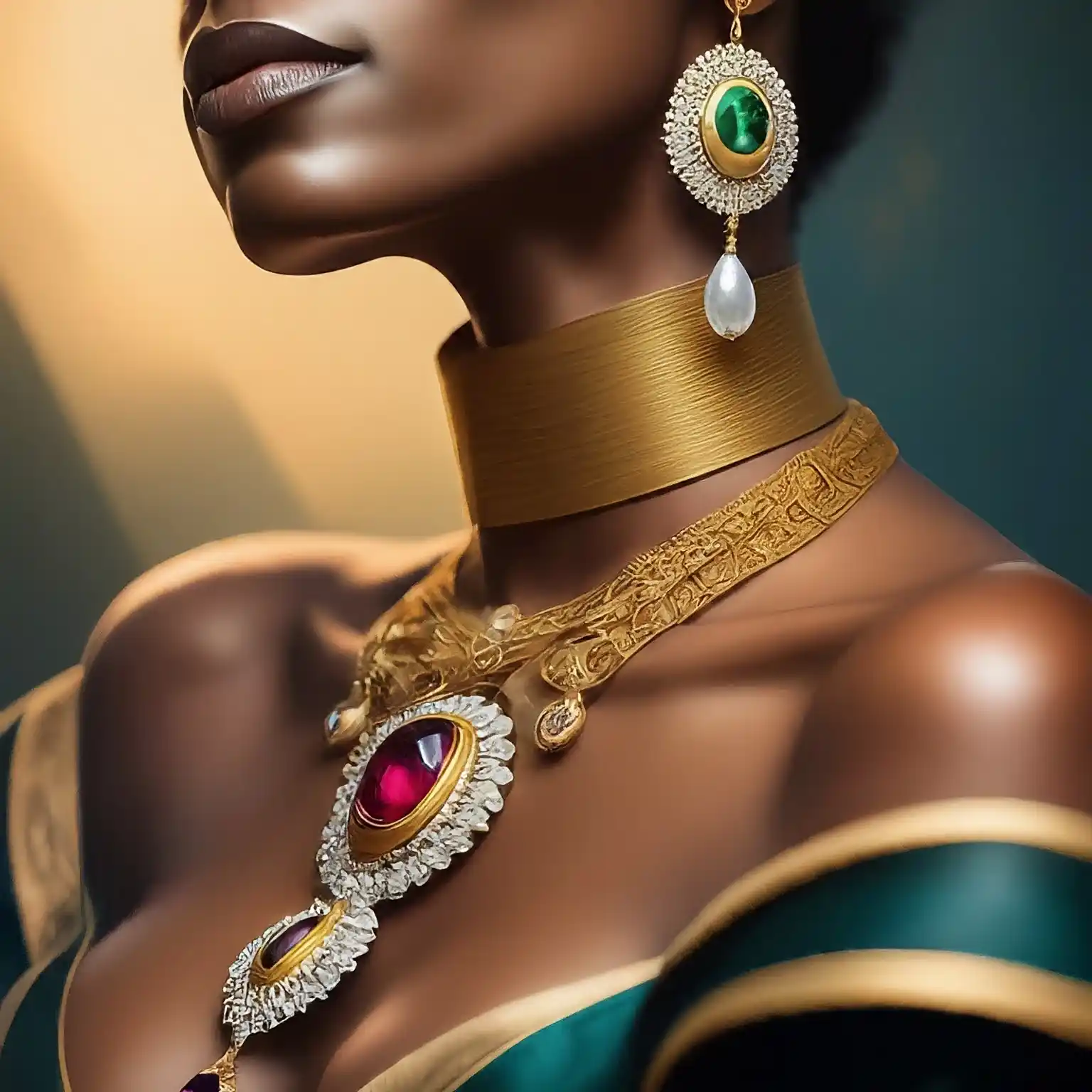
- Jewelry Market
Understanding the Factors That Affect the Value of a Pearl
Table of Contents
1. Size
Definition and Measurement: The size of a pearl is one of the most significant factors influencing its value. Pearls are measured in millimeters (mm) across their diameter. Generally, larger pearls are more valuable due to their rarity.
Impact on Value:
• Larger Pearls: Pearls over 9mm are considered large and are generally more valuable. The largest pearls, such as South Sea and Tahitian pearls, can reach up to 20mm or more and are highly prized.
• Rarity: Larger pearls are less common, which adds to their value. For instance, a high-quality 15mm South Sea pearl can command a significantly higher price compared to a smaller pearl of the same type.
• Proportion: In necklaces and bracelets, the size of the pearls should be proportionate to the design. A well-balanced design featuring larger pearls may enhance its overall value.
2. Luster
Definition and Importance: Luster refers to the way light interacts with the surface of the pearl. It is one of the most critical factors in determining a pearl’s quality and value. High luster pearls have a brilliant, reflective surface that enhances their appearance.
Impact on Value:
• High Luster: Pearls with high luster display a sharp, bright reflection and a deep, reflective glow. This quality is highly sought after and can significantly increase a pearl’s value.
• Medium Luster: Pearls with medium luster show some shine but lack the depth and intensity of high-luster pearls. They are generally less valuable.
• Low Luster: Pearls with low luster appear dull and lack the reflective quality that high-luster pearls possess. They are typically less expensive and may be less desirable in high-end jewelry.
3. Surface Quality
Definition and Inspection: Surface quality refers to the presence of blemishes, spots, and irregularities on the pearl’s surface. A pearl’s surface should be smooth and free of significant imperfections to be considered valuable.
Impact on Value:
• Flawless Surface: Pearls with an entirely smooth, blemish-free surface are rare and highly valuable. These pearls are often used in high-end jewelry pieces and are sought after by collectors.
• Minor Blemishes: Pearls with minor surface imperfections may still be valuable, but their price will be lower compared to flawless specimens. Surface blemishes can include small spots, ridges, or wrinkles.
• Significant Imperfections: Pearls with noticeable blemishes or irregularities may have a reduced value. These imperfections affect the overall appearance and desirability of the pearl.
4. Shape
Definition and Categories: The shape of a pearl is an essential factor in determining its value. Pearls come in various shapes, including round, semi-round, drop, button, and baroque.
Impact on Value:
• Round Pearls: Round pearls are the most valuable due to their symmetry and classic appeal. They are often used in high-quality pearl jewelry and are highly sought after.
• Semi-Round Pearls: Slightly off-round, these pearls still possess good value but are less expensive than perfectly round pearls.
• Drop Pearls: Pearls with a teardrop shape are valued for their unique and elegant appearance. They are often used in earrings and pendants.
• Button Pearls: These are flattened on one side and are commonly used in designs where the flat side can be showcased. They are valuable but typically less so than round pearls.
• Baroque Pearls: Irregularly shaped pearls can be quite beautiful and unique, adding to their appeal. While they may not be as valuable as round pearls, they are prized for their distinctiveness and are often used in artistic and contemporary jewelry designs.
5. Color
Definition and Range: The color of a pearl is another vital factor influencing its value. Pearls come in a range of colors, including white, black, pink, blue, and gold. Each color has its own rarity and appeal.
Impact on Value:
• White Pearls: Classic white pearls are highly valued, especially when they have a bright luster and a clean surface. They are often used in traditional pearl jewelry.
• Black Pearls: Black pearls, particularly those from Tahiti, are rare and highly valued. They come in various shades, including dark gray and greenish black, and are prized for their unique appearance.
• Colored Pearls: Pearls in colors like pink, blue, and gold can be quite valuable, especially if the color is deep and rich. The rarity of certain colors can add to their value.
• Overtones: Pearls can also exhibit overtones, which are secondary colors that add depth and complexity. Pearls with attractive overtones can be more valuable.
Additional Factors Affecting Value
1. Origin: The origin of the pearl can impact its value. For example, South Sea pearls are generally more valuable than freshwater pearls due to their size and rarity. Tahitian pearls are also highly prized for their unique colors and origins.
2. Quality of Nacre: The thickness and quality of the nacre (the substance that makes up the pearl) play a crucial role in its value. Thicker nacre generally results in a more durable and lustrous pearl.
3. Size of the Pearl Farm: Pearls from well-established and reputable farms can command higher prices due to their consistent quality and craftsmanship.
4. Jewelry Setting: The setting and design of the jewelry can also affect the pearl’s value. High-quality, well-designed settings that enhance the pearl’s natural beauty can add to the overall value of the piece.
Conclusion
Determining the value of a pearl involves a careful evaluation of several factors, including size, luster, surface quality, shape, and color. Each of these elements plays a crucial role in establishing a pearl’s worth and its desirability in the market. Understanding these factors can help you make an informed decision when purchasing pearls, whether for personal use or as a gift.
By paying attention to these aspects, you can appreciate the intricate beauty and value of pearls and select pieces that best meet your preferences and budget. Whether you opt for a classic white pearl, a vibrant black pearl, or a unique baroque pearl, knowing what influences a pearl’s value ensures that you make a wise and informed investment.
Related Posts


Jewelry and Social Status: A Historical Exploration of Wealth and Power
Fall in Love with Jewelry, Stories, and Secrets
Join Artemies Magazine for insider jewelry tips, trend updates, and subscriber-only discounts.


14 thoughts on “Understanding the Factors That Affect the Value of a Pearl”
I like the helpful information you provide
in your articles. I’ll bookmark your blog and check again here
regularly. I am quite sure I will learn lots of new stuff right here!
Good luck for the next!
Thank you for your kind words! We truly appreciate your support and are glad you find our articles helpful. Stay tuned for more insights, and feel free to visit anytime! 😊
whoah this weblog is fantastic i love reading your posts. Keep up the good work! You realize, many individuals are searching around for this information, you can help them greatly.
Thank you! 😊 Glad you enjoy our posts. We’ll keep sharing valuable insights—stay tuned! 💎✨
Hurrah, that’s what I was exploring for, what a stuff!
present here at this website, thanks admin of this website.
So glad to hear you found what you were looking for!
Thanks for your kind words — we truly appreciate your support.
Stay tuned for more great content! 🌟
It’s actually a great and useful piece of info.
I’m satisfied that you just shared this helpful info with us.
Please keep us informed like this. Thanks for sharing.
Thank you so much for your kind feedback!
We’re really glad you found the information helpful.
We’ll definitely keep sharing more — stay connected! 🌟
I loved as much as you’ll receive carried out right here.
The sketch is attractive, your authored subject matter stylish.
nonetheless, you command get bought an shakiness over that you wish be delivering the following.
unwell unquestionably come more formerly again as exactly the same
nearly a lot often inside case you shield this increase.
Thank you for your thoughtful comment!
We’re excited to share that there are around 50 excellent articles available in the Artemies Magazine on our website.
I warmly invite you to explore them and enjoy the rich content we’ve prepared.
Your continued support means a lot to us!
Hello, I enjoy reading all of your article post.
I like to write a little comment to support you.
Thank you for your kind words! We’re so happy you enjoy our articles—please feel free to share Artemies Gems & Jewelry with others!
Hi! I could have sworn I’ve been to this blog before but after reading through some of the post I realized it’s new to me.
Anyways, I’m definitely happy I found it and I’ll be book-marking and checking back frequently!
Hi there! 😊 I’m so glad you found us and that you’re enjoying the posts. Thank you for bookmarking the blog — it means a lot! We’ll keep sharing new content, so I hope to see you around again soon.